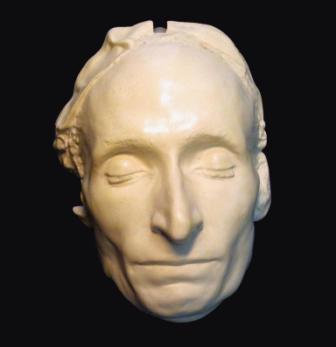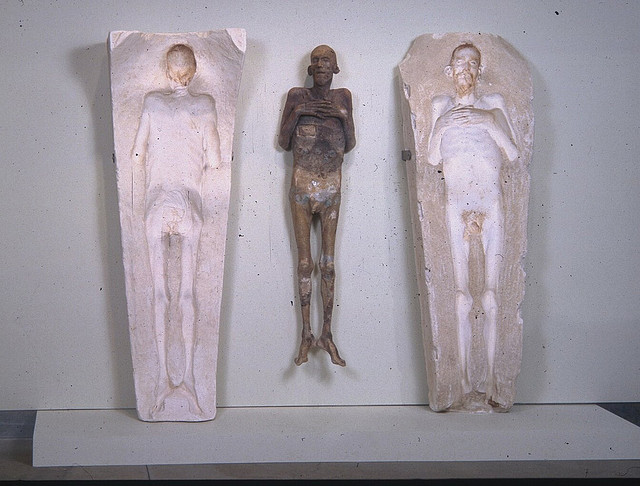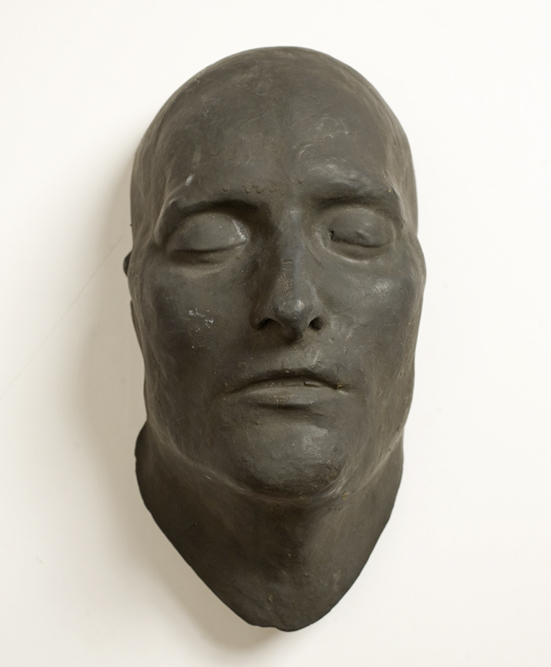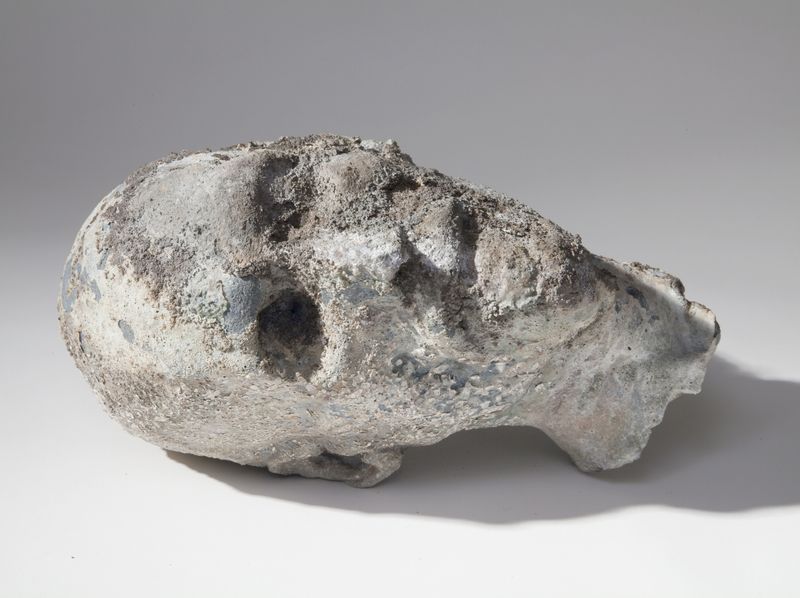Troy Simon Burdine II was a casualty of the AIDS epidemic, so rife in the Bay Area during the nineties. Moribund after years of fighting the virus, he petitioned his friend Richard Carter to cast his full body after death. Creating a replica of Troy’s figure and encasing his ashes within the piece, Carter produced a life-size reliquary that both memorializes his friend and serves as a testament to the victims of AIDS.
After casting Troy’s body, Carter filled the mold with clay that was then fired in a wood-burning kiln. At first, he reconfigured sections of the sculpture into a grid-like pattern for his Life after Life series of the late 1990’s:
“I did the whole grid series using pieces of his body, and it was compartmentalizing, it was the way that I was processing and then that became much less about him and more about me and my sexuality and fears.”
A few years later, Carter finally assembled Troy’s sculpture to recreate his full figure — now displayed with the flanking halves of the original cast in the Richard Carter Studio in Napa Valley. Troy is as haunting as it is elegiacal; the mold bears a striking resemblance to the archeological remains of bodies covered by ash in Pompeii.

Death Mask of Blaise Pascal, 1663.
One would be hard pressed to find many examples of post-mortem casting in today’s contemporary art world, though this process is part of a rich lineage of memorialization dating back to antiquity. The most resplendent examples are the sculpted masks placed over Egyptian mummies, such as the famous Tutankhamen. These ornaments were tailored to fit over the corpses, but were not actual replications of their face. The practice of casting wax molds to capture the likeness of the deceased was adopted in the Late Middle Ages and continued through the 19th century. The famous Madame Tussaud averted her own demise at the hands of French Revolutionaries and was then, in turn, recruited to cast death masks of fallen nobility. The list of historical death masks, cast from art luminaries to political leaders, reads like a ‘Who’s Who’ of every century: Napoleon Bonaparte, Ludwig von Beethoven, Dante Alighieri, and Blaise Pascal to name a few.
What makes the sculpture of Troy so powerful is its unabashed and direct confrontation with the materiality of death. Victorian culture had an intimate and familiar relationship with death, as well as its memorial art. The advent of photography in the 19th century led to the eventual proliferation, and increasingly facile production, of imagery in today’s IPhones, digital cameras, and Facebook uploads. Now, we have a rich repository of pictures to refer to after a loved one’s death, perhaps largely replacing the need for post-mortem art. Troy Simon Burdine II may be a footnote in the history of the death mask, though its corporeal quality elicits a visceral reaction in the context of today’s commemorative imagery.
Further Reading:
Here is a virtual museum of famous death masks.
The website for the famous New York City AIDS Memorial
Video of the “Troy Simon Burdine II” memorial sculpture.
Related articles
- Wax Direction: One Direction made into waxwork figures by Madame Tussauds (mirror.co.uk)
- What happened to Napoleon’s least bony part when he died? New book sheds light on the fate of famous people’s remains (dailymail.co.uk)
- For Those Who Have Lost A Spouse Today – They take pleasure in talking about their dead husband or wife in a loving way (sevenponds.com)

 Richard Carter’s Post-Mortem Cast “Troy Simon Burdine II”
Richard Carter’s Post-Mortem Cast “Troy Simon Burdine II”





 Having an Estate Plan Is Essential – So Is Discussing It With Your Children
Having an Estate Plan Is Essential – So Is Discussing It With Your Children
 The Healing Sound of Singing Bowls
The Healing Sound of Singing Bowls
 “Summons” by Aurora Levins Morales
“Summons” by Aurora Levins Morales














